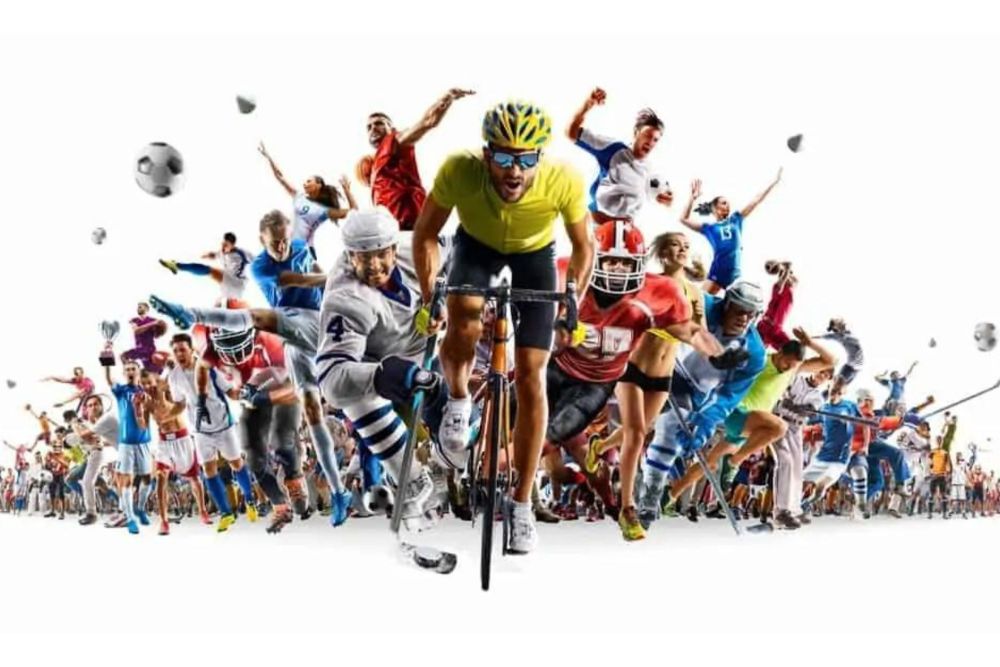Today, the sports sector is one of the most lucrative. People all throughout the world follow national favorites like baseball, American football, rugby, and so on, as well as major sports like football, cricket, and tennis.

Spending money on things related to sports is also something that people are willing to do in order to attend sporting events. Similar to products promoted by actors, products sponsored by athletes also appeal to a broad market. It’s a tried-and-true marketing tactic to advertise products during live athletic events.
The Drive Behind
Sports marketing is the practice of advertising products and services by leveraging athletic events and celebrity and team endorsements. In order to profit from the developed public interest, it also entails promoting sportsmen, sports teams, and sporting events.
Marketing ‘On-Field’
Recall the days before the pandemic and sports promotion. Some of the more contentious advertisements gave the impression that businesses were trying to outdo each other by coming up with the wildest, most provocative, or most unusual ads. Marketers modified their language during the pandemic to demonstrate empathy and support their clients, even though a distinctly ridiculous advertising campaign might have been a successful strategy to garner attention before to 2020.

The guidelines have been modified. After decades of using traditional advertising channels to communicate with their target audiences, sports marketers are now facing pressure to go in daring new routes from a consumer base that has undergone significant shift in the last few years.
The sports sector is undergoing radical restructuring in order to satisfy fans of the twenty-first century. It all comes down to interacting with fans off the field, from leagues and sportsmen bringing themselves closer to culture through collaborations in music, fashion, and gaming to new alliances aimed at fostering audience connection.
But traditional advertising still has a place in today’s sports marketing. Both young and old consumers can easily identify McDonald’s golden arches and Nike’s swoosh, thanks in large part to marketing’s tried-and-true strategies. However, most brands are now compelled to use this strategy more surgically, or at least selectively, because to rising inflation and dwindling revenues. Sports marketers nowadays will almost always forego a high-profile brand recognition play in favor of a digitally focused, carefully crafted experience that has a higher chance of striking a deep chord and sticking with customers.
Trending Shots
The way that businesses and brands interact with athletes, teams, and fans is changing as a result of new developments in sports marketing. Decision-makers must keep up with these changes to keep a competitive edge in the fast-paced sports sector as customer tastes and technological advancements drive change.

Digitization: Artificial intelligence (AI) and digitization have taken off, revolutionizing sports marketing by allowing for round-the-clock contact between teams and supporters.
Engagements specifically tailored for fans: AI chatbots such as ChatGPT are transforming fan interaction. Based on a user’s preferred player or team, these chatbots can offer updates, provide answers to queries, and even recommend items.
AR/VR/MR: By providing athletes with immersive training environments and creating new avenues for growth in the quickly expanding e-sports market, the advent of VR, AR, and mixed reality technology has completely transformed the sports business.
Wearable Technology: According to market forecasts, wearable technology will increase at a compound annual growth rate (CAGR) of 9.82% between 2023 and 2023 as it continues to advance. This offers prospective uses in sports marketing that are likely to grow in the future.
Social Media Arena
The sports sector has been greatly impacted by social media’s transformation into a source of information. Information is available everywhere and at any time thanks to social media and cellphones, which also speed up the internet and send data quickly. Social media is the primary source of information for players, teams, coaches, and fans. While they watch games, fans are probably browsing via social media on their devices. The appeal of sports and individual sportsmen is increased by all of this.
Statistics Board – Future Run Rates
With the most well-liked sports and teams demonstrating a favorable economic impact, the sports industry is the largest entertainment sector globally. The global sports market was estimated to be worth $370000.0 million in 2022 and is expected to grow at a compound annual growth rate (CAGR) of 10.61% to reach $677673.0 million in 2028, according to the Global Sports Market Size, Share and Industry analysis report. When compared globally, the United States accounted for a sizeable share of sales (37.42% in 2022).
Sports Consulting Market: An adequate and thorough overview of the market, segmentations, state and trends, opportunities and challenges, industrial chain, competitive analysis, company profiles, trade statistics, and other topics are covered in the Sports Consulting market research. With a compound annual growth rate of 21.25% from 2022 to 2028, the size of the worldwide sports consulting market is expected to increase from its estimated $5955.31 million in 2022 to $18920.59 million.
Red Cards of Sports Marketing Industry
In order to thrive in the very competitive field of sport marketing, marketers must remain aware of the numerous variables at play. Overpowering corporate ween structures, brand oversaturation, and other issues are some of the main obstacles facing e-commerce.
To be noted, Marketing via sports could result in the use of sports to promote products and services taking center stage over the sport itself. As a result, companies end up controlling sportsmen or sports teams excessively. When money becomes the main priority, the sport itself suffers. Integrity is being lost and the huge businesses have the last word.
Future of Sports Marketing
What direction will sports marketing take, though, in the next years? Will marketers revert to the tried-and-true material of the past as we gradually resume in-person events, or will the pandemic inspire a new wave of marketing strategies?
Both are likely to play in the response.
It’s also becoming more obvious that the unifying theme of these new tactics is a workable route to engagement with all audiences, despite the perception that Gen Z has endowed sports marketers with a road map to success. It is insufficient to merely observe. Fans of today desire interaction. Modern sports fans are now active players rather than just passive viewers thanks to new regulations in sports marketing.

With quantifiable metrics providing the basis for strategic decision-making, businesses and marketing agencies are depending more and more on an analytical, data-driven strategy to optimize their influence in today’s dynamic marketplace.
A major turning point in the history of brand promotion has been reached by sports marketing, which has transformed from a completely instinctive endeavour to a data-driven, statistically directed field.
